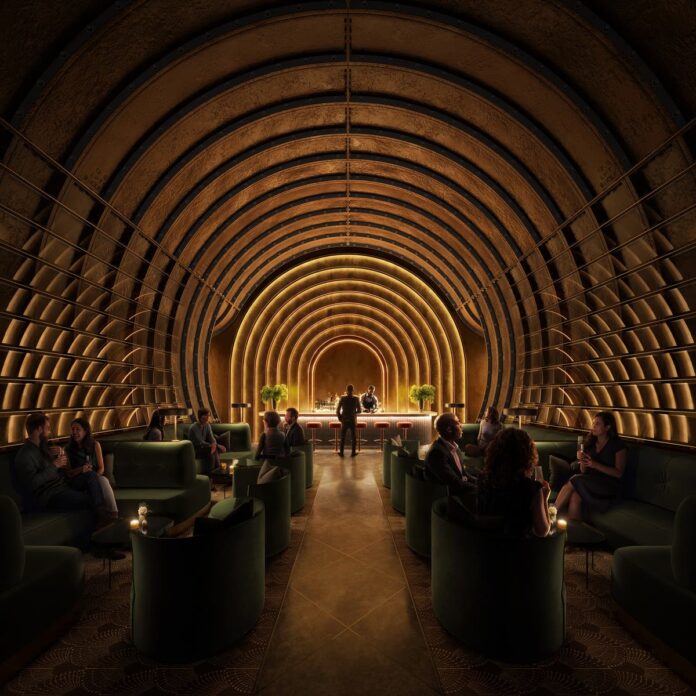A secret network of tunnels used by Winston Churchill and the inspiration for James Bond’s Q branch could be opened as London’s next tourist hotspot. Hidden deep below the surface of central London lies a vast network of secret spy tunnels which will be open for the public in an exciting £220 million plan. The Kingsway Exchange tunnels encompass 8000 square metres of labyrinthine pathways lying 40 metres below High Hoburn, a lot of mystery surrounds the subterranean base as it was used by MI6 officials during World War II and the Official Secrets Acts protected the area. If the planning is approved, investors plan to spend £220 million on the project which includes £80 million on interactive screens Construction of the underground labyrinth started in October 1940 and served as shelter at the start of the London blitz, the deep shelters linked to pre-exisitng underground stations. The Kingsway Telephone Exchange is one of the 10 planned shelters commissioned at the time, of which only eight were completed. In 1944, the underground network became known as the ‘London Civil Defence Regional and Ministry of Works’ but this was a cover-up for the research and development of The Special Operations Executive, an offshoot of MI6. The Special Operations Executive helped the resistance of Nazi-occupied European regions and counted over 1000 workers. One notable member of the force was Ian Fleming, the author of the James Bond novels who used the hidden network as an inspiration for Q Branch, say the London Tunnels LTD. The tunnels also protected over 400 tonnes of secret documents belonging to the Public Record Office, including those of the Domesday Book, which was 900 years old at the time. A map giving a birds-eye view of where the The hidden network also held London’s deepest licensed bar, which London Tunnels LTD hope to resurrect to serve ‘shaken, not stirred’ Vesper Martinis below the bustle of the London Underground. Post-war the tunnels took on a new form as they served as a covert telephone exchange during the Cold War. It was here the first transatlantic cable was constructed which later served as a ‘hotline’ between Washington and Moscow during the Cuban Missile Crisis. The underground network was home to the first ever transantlantic cable which served as a hotline between the Kremlin and the Whitehouse during the Cold War The new project, which has not yet been approved, hopes to take visitors on a journey across time to transport visitors back to the Blitz and then onto a secret spy journey through Cold War subterfuge. According to The Mail , the BT group has agreed to sell the Kingsway Exchange to the London Tunnels LTD, who hope to invest £140 million into restoring the site, with a further £80 million for the interactive screens. Angus Murray, an Australian banker is the Chief Executive of the London Tunnels LTD, he alongside his backers requires planning commission from Camden Council. Mr Murray said, as reported in The Mail : ‘The history of the tunnels, their scale and the location between London’s Holborn and the historic Square Mile, could make these tunnels one of London’s most popular tourist destinations. ‘We now wish to work with local stakeholders and residents to make this a reality and look forward to hearing their thoughts as we finalise a planning application.’ The group is set to submit their planning application next month in November 2023.
Secret Second World War spy tunnels to create London’s biggest tourist attraction
Sourceindependent.co.uk
RELATED ARTICLES


